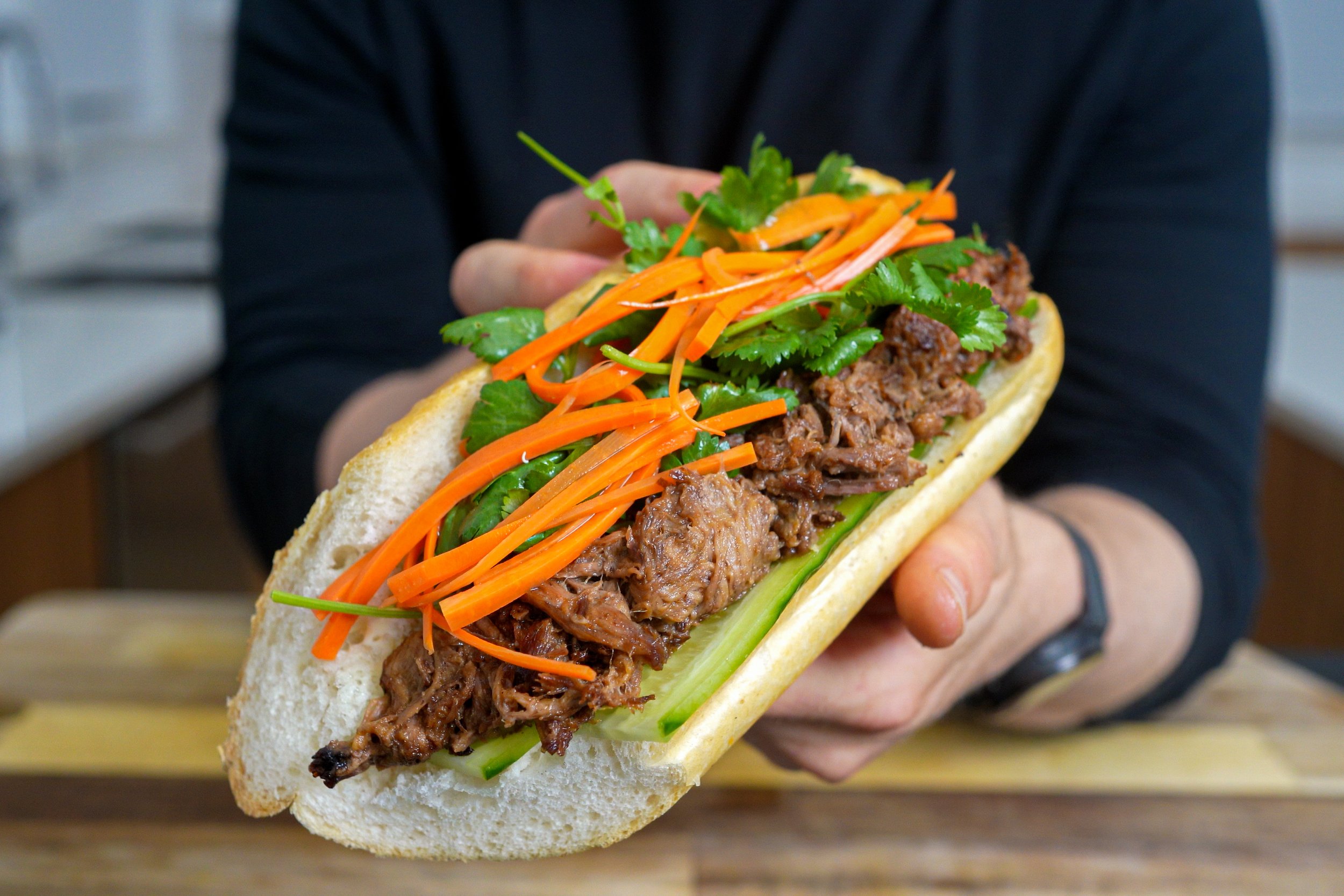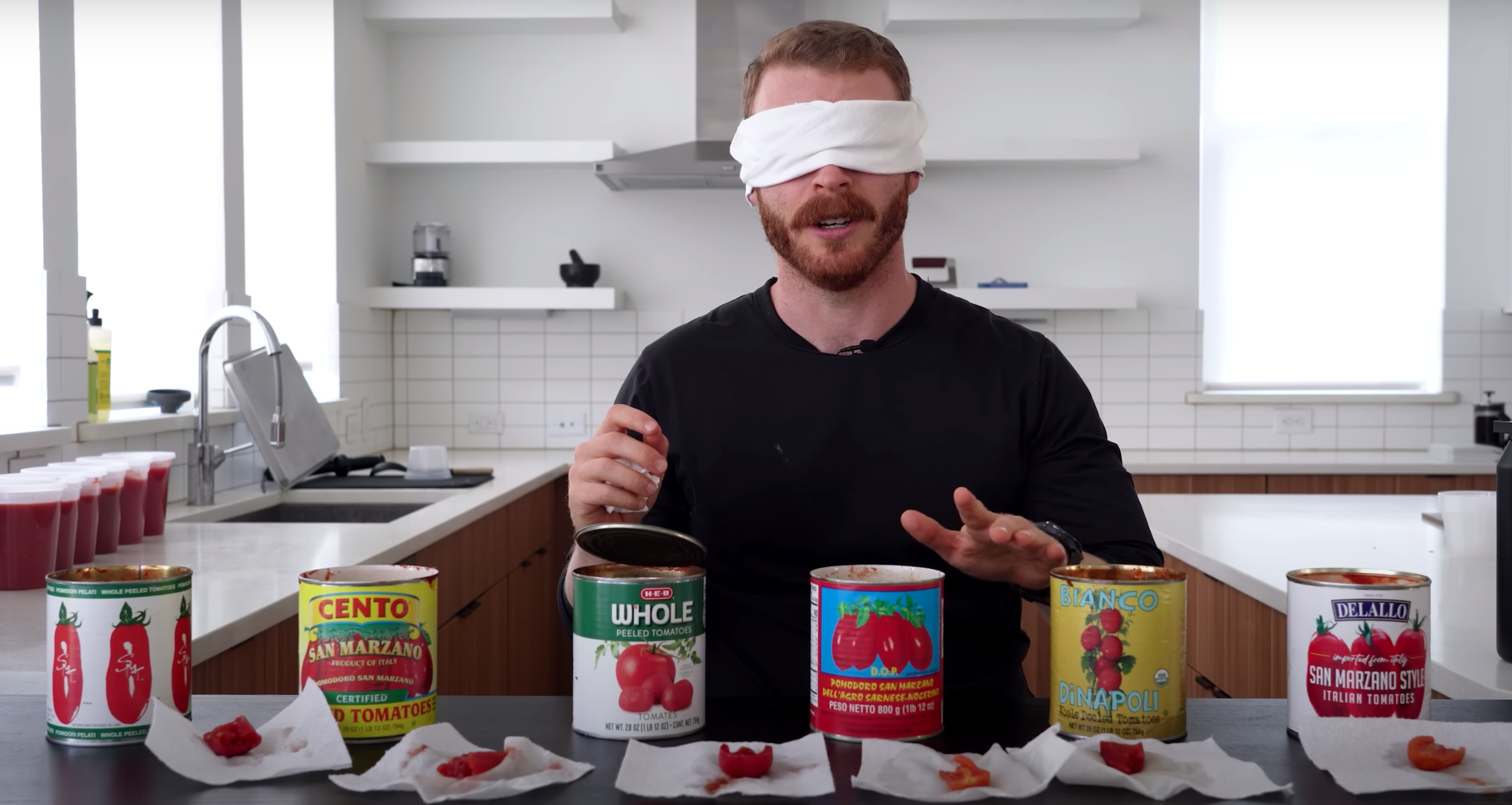Are You Buying the Right Olive Oil?
Olive oil is one of the more expensive ingredients we buy as home cooks. Unfortunately, the options are overwhelming and seemingly endless.
For example, what's the difference between extra virgin, virgin, pure, and light? What about filtered vs unfiltered? What does first cold-pressed mean? With all these terms (including some questionable marketing tactics) how are we supposed to know which olive oil is the good stuff?
Today, we'll explain all of this — including why it's nearly pointless to buy anything except extra virgin olive oil (at least from a culinary perspective).
How is Olive Oil Made?
There are a couple of great videos on how olive oil is made. But as described in “On Food and Cooking” by Harold McGee, the general process is:
cleaning the olives
crushing the pits and flesh
finely grounding them into a paste (to break the fruit cells which frees up the oil)
pressing and squeezing the paste so the oil and watery liquids separate from the solids
Source: European Commission- Olive Oil Fact Sheet
What are the Grades of Olive Oil?
The international olive council came up with grades of olive oil which though the US is not an official member the USDA has adopted.
http://www.oliveoilcommission.org/valued/
In general, there are 4 types of olive oil, but you are only likely to see the first three at the store.
Extra Virgin Olive Oil
Virgin Olive Oil
Olive Oil (aka cooking or light olive oil)
Refined Olive Oil (aka extra light)
The primary differentiators between them are:
The amount of processing
Flavor and odor
Free fatty acid content
Here’s how each kind stacks up:
Extra Virgin
Excellent flavor and odor with median defects or equal to zero
Free fatty acid content of no more than .8 grams per 100 grams of oil (.8%)
Virgin olive oil
Reasonably good flavor and odor with median defects between zero and 2.5
Fatty acid content is no more than 2.0 grams of free fatty acid per 100 grams (2%)
Olive oil - A ‘Frankenstein’ blend of the two
Is a blend of refined olive oil and virgin olive oil that yields some flavor and odor characteristics of virgin olive oil.
Free fatty acid content is no more than 1.0 gram per 100 grams (1%)
Is also known as cooking or light olive oil
Refined or Pure Olive Oil
Made from remaining virgin olive oil with higher than 2.0 grams of free fatty acid per 100 grams that is then processed to remove all impurities from remaining oil molecules. This includes flavor molecules and results in a flavorless and odorless olive oil.
After being processed, has a free fatty acid content of no more than .3 grams per 100 grams (.3%)
Is also known as extra light
In general, there is an inverse relationship here. The less processing the oil goes through the more flavor molecules the olive oil retains and also the more expensive.
What about Cold-Pressed and Filtered Olive Oil?
Some other terms you may see on extra virgin olive oil bottles are:
First cold press or just cold-pressed. These mean exactly what they say. This olive oil was from the first press of the olive paste which typically yields extra virgin olive oil. Cold pressing ensures the olives never got above 27 C or 80 Fahrenheit. Higher than that can cause more free fatty acids in the oil.
Unfiltered or filtered. Filtering is a process that traps and removes any particles of olive fruit that may be in the oil.
Unfiltered oil can have a slight difference in color and also have an enhanced taste and flavor, except it has a much shorter shelf life so it must be consumed more quickly. You'll likely only see this at olive oil specialty shops.
Most of the olive oil you see at major grocery stores will be filtered since it has a longer shelf life.
Why does free fatty acid content matter?
So this is good and all, but why should you care about free fatty acids? As mentioned in “On Food and Cooking,”
Olive oil quality is judged by its overall flavor and by its content of “free fatty acids,” or fatty carbon chains that should be bound up in intact oil molecules but instead are floating free, and that is evidence that the oil is damaged and unstable.
McGee, Harold. On Food and Cooking: The Science and Lore of the Kitchen (p. 340). Scribner. Kindle Edition.
Mono-saturated oleic acid is usually desirable — but not when floating free because this means the oil is vulnerable to oxidation which can happen while heating the oil up or just when it is stored over time. This oxidation can produce off-flavors that are stale and harsh. Extra virgin, regular olive oil, or refined olive oil will be more stable cooking at high temperatures which will be discussed further down.
But how do I know I'm getting the real stuff?
First, you can take a look at the ingredient label. In general, It will either say extra virgin olive oil only, a blend of virgin and refined olive oil, or refined olive oil only.
If you are international, there is a list of countries that are members of the International Olive Council that produce olive oil under rigorous specifications.
But if you are in the US, you are unlikely to find imported olive oil. Look for these 3rd party seals: California Olive Oil Council, the North American Olive Oil Association, or the Olive Oil Commission of California, which actually has the most stringent of all EVOO specifications.
If you don't see the seal you can check out their list online for a brand you see at the store that they certified.
Also, take a look out for a harvest date on the bottle. In general, this is just good transparent practice from producers. Typical harvest dates start in October and end in February. So if you are buying a bottle in September 2021, you'll see a date from late 2020 or early 2021.
Harvest date matters for 2 reasons.
1)You want to be buying the freshest oil possible.
The ripeness and maturation of the olive fruit at the time of harvest can change the properties and flavor of the oil you get. Try a few different bottles to see what you like.
The question remains though, which one should I get for my kitchen?
The Best Olive Oil for Cooking
Two roles of olive oil
In cooking, olive oil can play two primary roles.
Finishing or flavoring such as a salad dressing or dipping bread into
As a cooking medium for sautéing vegetables or frying.
For number one, if the goal is to optimize the flavor and smell you want an extra virgin olive oil that you enjoy. Maybe this means going to an olive oil store and looking at the flavor characteristics. In fact, there is a tasting wheel that has all the unique flavors an olive oil can potentially have.
So for raw applications, get an EVOO that tastes good to you.
But can you cook with that same olive oil?
Now cooking is where things get interesting in my opinion. So remember the free fatty acids content in the various oils? So the lower free fatty acid content means fewer impurities which could have implications on how the oil reacts when heated.
A study on the Evaluation of Chemical and Physical Changes in Different Commercial Oils During Heating shows a table EVOO, VO, and OO. Of the three, Virgin olive oil as expected has the highest % of FFA and interestingly has the lowest smoke point at 175 C or 347 Fahrenheit.
In general, this UC Davis fact sheet notes that olive oil can have a smoke point ranging from 347°F (175°C) to 464°F to (240°C), depending on the grade, quality, and freshness.
Now as Adam Ragusea outlined in a video, the smoke point isn't the only thing that matters when it comes to high temp cooking. Oils with a high smoke point can still break down and oxidize when cooking. Extra virgin olive oils, however, turn out to be one of the most stable of all oils at higher temperatures.
In other words, EVOO is perfectly suited for high-heat cooking. Use it all you want if you’re fine with the added flavor in the cooked dish.
Why Neutral Olive Oil is Pointless
So extra virgin olive oil is great for cooking at high temperatures too, but what if you don't want the flavor of the EVOO? Should you get the odorless and flavorless olive oil?
Well, you could, but why not just buy a cheaper neutral oil?
Here is an average price spread per 15 g of extra virgin, extra light or refined olive oil, and peanut.
As you can see, the refined oil is actually just an expensive neutral oil (even though on the bottle it says it's a tasting oil). Remember the USDA definition of “refined” is odorless and flavorless.
So to save money and for a flavorless cooking base, any neutral oil generally works.
In my kitchen, I turn to peanut oil. According to “The Food Lab” (J. Kenji Lopez Alt), peanut oil is higher in saturated fat at 17% compared to 13% in most olive oils which helps foods become crisper. Thus, peanut oil is easily my preferred frying oil.
So with price considered, peanut oil (or a similar neutral oil) and EVOO are the only two oils that I think are essential in every home cook's kitchen.
Overall Advice
In conclusion, here is my recommendation for the average home cook:
Choose a good size bottle of mid-tier extra virgin olive oil that smells fragrant to you. This can be used for both cooking and flavoring.
For more flavor when used raw, purchase a small unfiltered extra virgin olive oil from your favorite producer.
If in the U.S., look for a seal of approval from the NAOOA, COOC, or OOCC (linked below) If international, look at the IOC member countries.
Look for a harvest date on the bottle to ensure you are getting the freshest olive oil.
Use non-olive neutral oils (like peanut or canola) for general cooking/frying to save money and for neutral flavor applications.
Sources
Grading / Certification Resources:
https://www.aboutoliveoil.org/certified-olive-oil-list - NAOOA
https://cooc.com/certified-oils/ - COOC
https://www.ams.usda.gov/grades-standards/olive-oil-and-olive-pomace-oil-grades-and-standards - USDA
https://www.internationaloliveoil.org/olive-world/olive-oil/ - IOC
http://www.oliveoilcommission.org/valued/ - OOCC
Research Documents:
https://actascientific.com/ASNH/pdf/ASNH-02-0083.pdf
https://olivecenter.ucdavis.edu/media/files/myths1933.pdf
Video on how olive oil is made: https://www.youtube.com/watch?v=dnzSo...
Adam Ragusea on EVOO smoke point: https://www.youtube.com/watch?v=l_aFHrzSBrM
Tasting Wheel: https://www.californiaoliveranch.com/articles/how-to-taste















